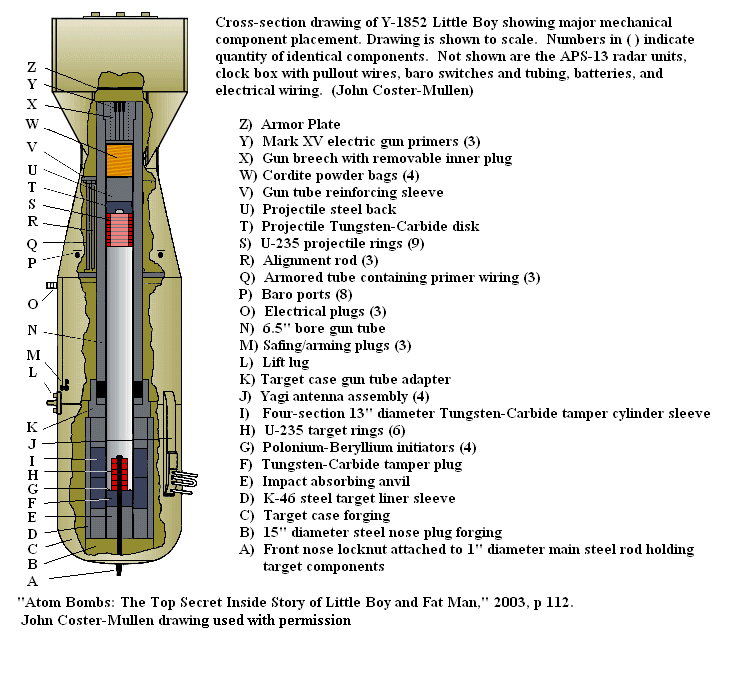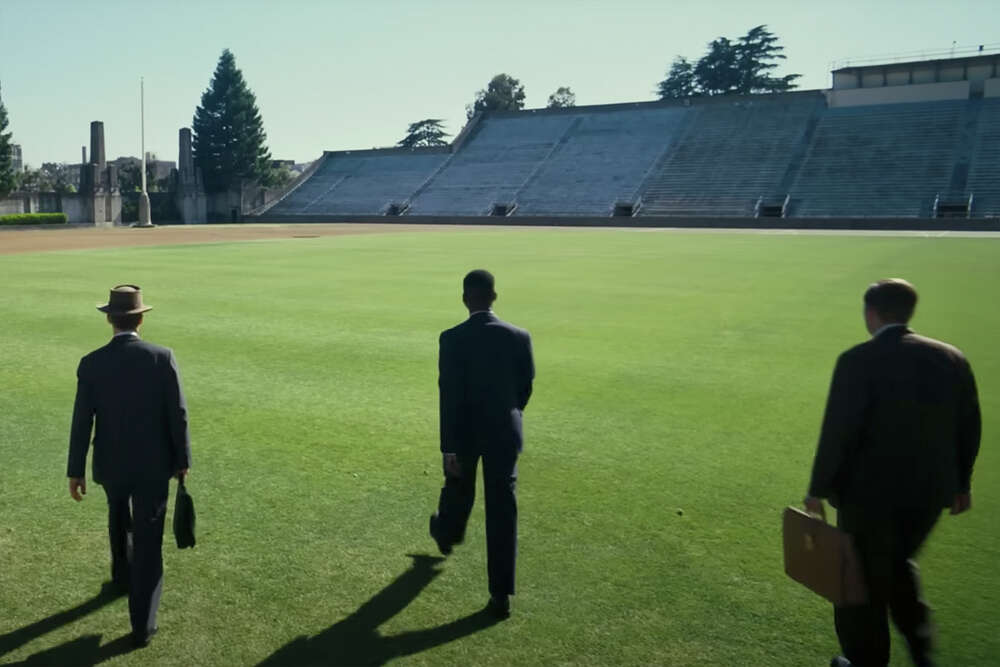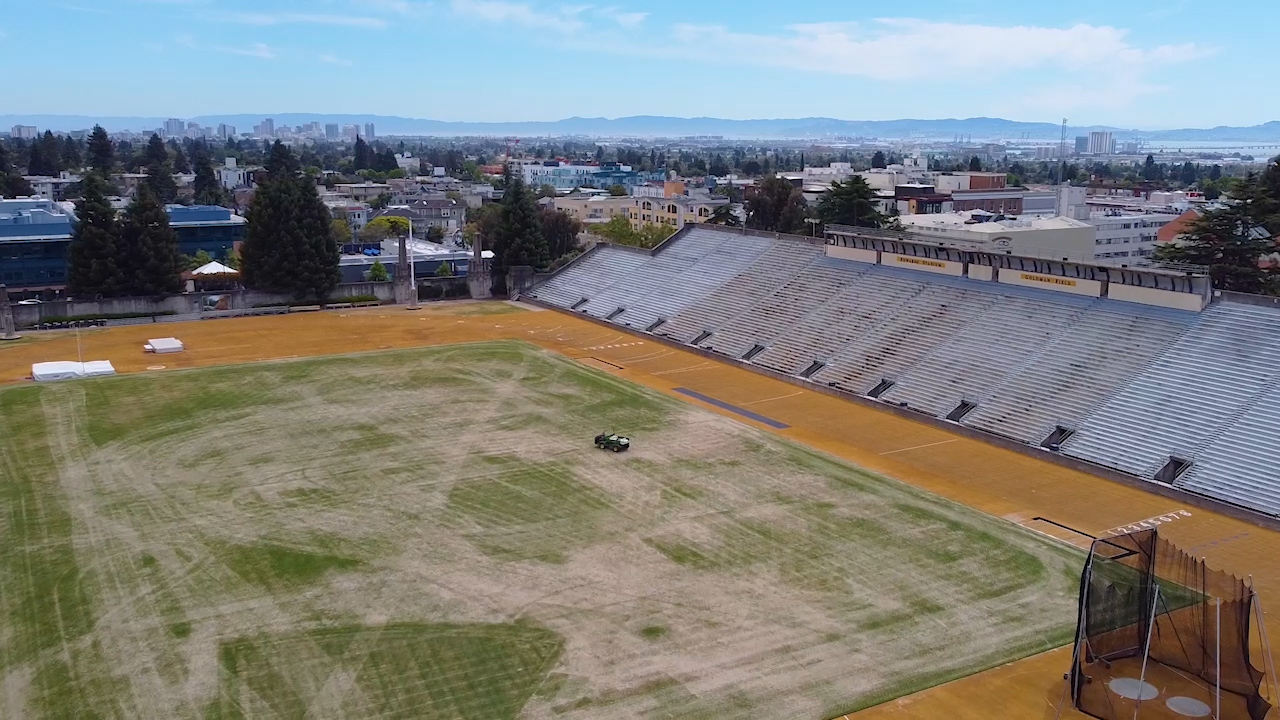MolaKule
Staff member
The Movie centered around the personality and life of Julius Robert Oppenheimer.
I went to see it to see how much of the actual physics of the atomic bomb would be disclosed. There are many flashbacks (done in black and white film) to set the stage for the overall background.
What I didn't see discussed was the spontaneous fission (SF) problem. Background: The first Abomb design was to be of the "Gun" design (Thin Man, Little Boy) where fissile plutonium pieces were to be fired toward each other. It was found that Pu239 (Plutonium 239) absorbs a neutron and converts to Plutonium 240 too soon and then sheds excess energy via the emission of a Gamma Ray. So the gun design could not move the necessary amount of critical mass fast enough down a tube toward each other to overcome this problem.
This was when the implosion device (Fat Man) was considered to be the only solution, a device with 32 explosive "lenses" to decrease the fissile material's volume very quickly. It was John von Neuman who solved the shock wave problem for the explosive lenses.
In spite of that, the assembly scene of the Fat Man bomb is very accurate.
Of course, the Little Man gun bomb, of uranium U235, was never tested before dropping because the lab had determined that a slug travelling at 1,000 fps would cause fission before it disintegrated.
Characters (I'll only mention some of the main characters as the cast was quite extensive):
Cillian Murphy did an excellent job as the chain smoking Oppenheimer (Oppie), showing his visionary approaches to science as well as his human frailties, and as the Scientific Director of the Manhattan Project.
Matt Damon as General Groves, did a tremendous job as the military director of the Manhattan Project. In the movie, Oppenheimer and Groves often clashed on how things should be done, but always came to an agreement with some comedy mixed-in. Groves trusted Oppie to get the job done. Oppie always kept Groves informed of any "hitches" within the project but always offered solutions for any problems, the mark of a good scientist. Both Groves and Oppenheimer had to fight the bureaucracy at times to accomplish their tasks.
David Krumholtz (of NUMB3RS fame) was I.I. Rabi (Robby), who seemed to play the alternate conscience of Oppenheimer, and his trusted advisor and friend. (BTW, it was Rabi's discovery of magnetic resonance that led to the invention of the MRI diagnostic machine). An excellent biography of Rabi was done by one of my former professors, John H, Rigden.
Ernest O Lawrence of the cyclotron "RAD lab" was well played by Josh Hartnett and often brought Opie back to reality.
Benny Safdie played the temperamental and often explosive Edward Teller, who later co-developed the H-bomb. But it was Teller who showed that the implosion device could only be successful by using a U238 tamper plug.
The latter part of the movie appeared to portray Oppie as a martyr because of his association with people in the Communist Party (guilt by association) and by various committees. Both Einstein and others told him not to appear before those committees and to tell the committees to go..... themselves, but he felt he had to uphold his reputation and decided to fight them. In the end, he lost his security clearance due to underhanded actions designed by Lewis Strauss (struss), played by Robert Downey Jr.
This movie is definitely NOT a movie for non-adults as Florence Pugh (who played Jean Tatlock, Opie's communist girlfriend), and Oppie have some rather "disclosing moments."
I think Christopher Nolan did an excellent job showing Oppies character, the sense of the times, and presenting some scientific information.
BTW, the patent on the implosion device and its construction process has never been disclosed and is still classified as secret.
In my personal Opinion, Julius Robert Oppenheimer should have been awarded the Nobel prize for his work in stellar gravitation, and the Atomic bomb at the least. It's unfortunate that at times we punish our heroes instead of rewarding them.
I went to see it to see how much of the actual physics of the atomic bomb would be disclosed. There are many flashbacks (done in black and white film) to set the stage for the overall background.
What I didn't see discussed was the spontaneous fission (SF) problem. Background: The first Abomb design was to be of the "Gun" design (Thin Man, Little Boy) where fissile plutonium pieces were to be fired toward each other. It was found that Pu239 (Plutonium 239) absorbs a neutron and converts to Plutonium 240 too soon and then sheds excess energy via the emission of a Gamma Ray. So the gun design could not move the necessary amount of critical mass fast enough down a tube toward each other to overcome this problem.
This was when the implosion device (Fat Man) was considered to be the only solution, a device with 32 explosive "lenses" to decrease the fissile material's volume very quickly. It was John von Neuman who solved the shock wave problem for the explosive lenses.
In spite of that, the assembly scene of the Fat Man bomb is very accurate.
Of course, the Little Man gun bomb, of uranium U235, was never tested before dropping because the lab had determined that a slug travelling at 1,000 fps would cause fission before it disintegrated.
Characters (I'll only mention some of the main characters as the cast was quite extensive):
Cillian Murphy did an excellent job as the chain smoking Oppenheimer (Oppie), showing his visionary approaches to science as well as his human frailties, and as the Scientific Director of the Manhattan Project.
Matt Damon as General Groves, did a tremendous job as the military director of the Manhattan Project. In the movie, Oppenheimer and Groves often clashed on how things should be done, but always came to an agreement with some comedy mixed-in. Groves trusted Oppie to get the job done. Oppie always kept Groves informed of any "hitches" within the project but always offered solutions for any problems, the mark of a good scientist. Both Groves and Oppenheimer had to fight the bureaucracy at times to accomplish their tasks.
David Krumholtz (of NUMB3RS fame) was I.I. Rabi (Robby), who seemed to play the alternate conscience of Oppenheimer, and his trusted advisor and friend. (BTW, it was Rabi's discovery of magnetic resonance that led to the invention of the MRI diagnostic machine). An excellent biography of Rabi was done by one of my former professors, John H, Rigden.
Ernest O Lawrence of the cyclotron "RAD lab" was well played by Josh Hartnett and often brought Opie back to reality.
Benny Safdie played the temperamental and often explosive Edward Teller, who later co-developed the H-bomb. But it was Teller who showed that the implosion device could only be successful by using a U238 tamper plug.
The latter part of the movie appeared to portray Oppie as a martyr because of his association with people in the Communist Party (guilt by association) and by various committees. Both Einstein and others told him not to appear before those committees and to tell the committees to go..... themselves, but he felt he had to uphold his reputation and decided to fight them. In the end, he lost his security clearance due to underhanded actions designed by Lewis Strauss (struss), played by Robert Downey Jr.
This movie is definitely NOT a movie for non-adults as Florence Pugh (who played Jean Tatlock, Opie's communist girlfriend), and Oppie have some rather "disclosing moments."
I think Christopher Nolan did an excellent job showing Oppies character, the sense of the times, and presenting some scientific information.
BTW, the patent on the implosion device and its construction process has never been disclosed and is still classified as secret.
In my personal Opinion, Julius Robert Oppenheimer should have been awarded the Nobel prize for his work in stellar gravitation, and the Atomic bomb at the least. It's unfortunate that at times we punish our heroes instead of rewarding them.
Last edited:






